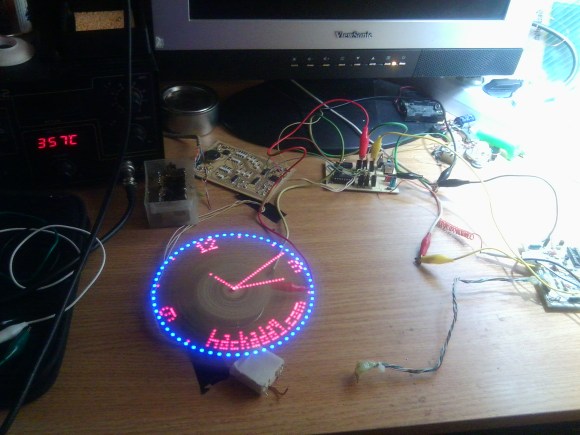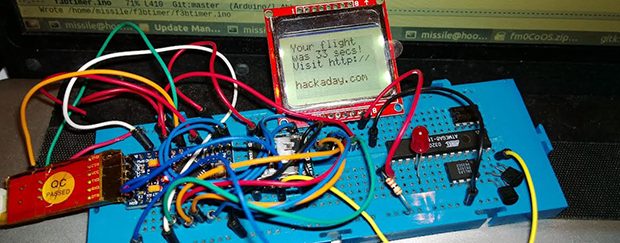
Here’s a musical entry for the Fubarino Contest that turned out to be rather delightful. First, [Mats] shows off his musical knowledge by using the notes H, A, and D to play the chord that unlocks the Easter eggs. What’s that you say? There’s no H on your keyboard? You’re wrong. In the German music tradition B natural is known as H. This is what allowed Bach to write a tune that spells his name.
[Mats] is hacking on his PlingPlong synthesizer. The first Easter egg—which you can see in the clip after the break—launches with the H-A-D chord in the lower octave, spelling out our URL on the 7-segment displays. But we prefer the second egg, launched with the chord in the upper octave, which is shown above. It uses the 3×5 LED grid to scroll out the address; in this still image an H is displayed.
This is an entry in the Fubarino Contest for a chance at one of the 20 Fubarino SD boards which Microchip has put up as prizes!


 [Sebastian] works at an engineering company testing car ECUs, head units, and all the confusing wiring harnesses found in the modern-day automobile. It’s good work, but not exactly fun, so [Sebastian]’s bosses bought a foosball table so the employees could unwind. The foosball tables have been there for several years, and now everyone at the company is really, really good at twirling little football players on a stick. With their current rule set (at least 6 goals and 2 goals ahead), matches last at least twenty minutes.
[Sebastian] works at an engineering company testing car ECUs, head units, and all the confusing wiring harnesses found in the modern-day automobile. It’s good work, but not exactly fun, so [Sebastian]’s bosses bought a foosball table so the employees could unwind. The foosball tables have been there for several years, and now everyone at the company is really, really good at twirling little football players on a stick. With their current rule set (at least 6 goals and 2 goals ahead), matches last at least twenty minutes.













